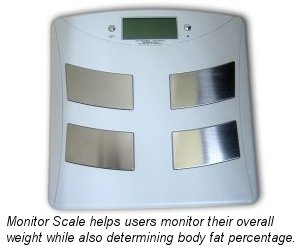Overweight And Hypertension
The number of overweight and obese people in US is growing. In 2000 65% of adults were overweight and 31% were obese. Each year an average US citizen is gaining 2 pounds of additional body weight.
The conequence of this is the elevation of blood pressure and the growth of number of hypertensive people. One third of Americans already have blood pressure above 140/90 mmHg or receive antihypertensive treatment.
The weight loss leads to the decrease in blood pressure in many obese patients. However, most overweight hypertensive individuals can not reduce their body weight and maintain it in long run, despite strong motivation and extraordinary efforts.
Obviously, neither weight loss methods nor antihypertensive treatment do not address the cause of both condition. There is the growing evidence now that the underlying cause of both hypertension and weight gain is the chronic over-activation of sympathetic nervous system (SNS).
SNS is normally activated during stressful situations. Repeated or prolonged stresses bring to chronic extensive activity of SNS, deregulation of body functions and the development of various diseases.
Which disease will develop depends on individual genetics and environment. For the majority of people this weight gain and hypertension.
The main suspected mechanism here is the insulin resistance. Insulin resistance is the decreased ability of insulin to promote glucose utilization by the cells. Insulin here is not damaged nor its concentration declines. But the cells affected by SNS over activity refuse to intake and utilize glucose as a source of energy.
Of course, overeating and low physical activity aggravate the process because the cell will sooner refuse to utilize glucose if it is in surplus in blood and energy expenditure is decreased.
Insulin resistance results in increased blood concentration of both insulin and glucose. That leads to the deviations in lipid and carbohydrate metabolism and eventually to the fat accumulation and blood pressure elevation.
The accumulated fat in its turn becomes an important endocrine organ, promoting further development of obesity by stimulating SNS and secreting steroid hormones.
There are two types of fat and two types of obesity. The fat can be subcutaneous and visceral and the obesity can be central and low.
Visceral or intra-abdominal is located inside the abdominal cavity. It stimulates SNS much more than subcutaneous fat and its accumulation is strongly associated with hypertension.
Central or abdominal type of obesity is the accumulation of fat mainly around the waist. The low or hip type of obesity is the accumulation of fat mainly around the hips. The ratio between waist and hip diameters allows distinguishing two types of obesity. Waist/hip ratio, when checked against cardiovascular mortality, shows that abdominal (central) obesity is more dangerous than hip obesity.
Conclusion:
Hypertension and weight gain are both the result of chronic over activity of Sympathetic Nervous System. This explains why many people can not reduce and maintain normal body weight in spite of strong motivation and thorough application of standard weight loss methods, not affecting sympathetic activity.
-
Fat Reduction Tips For the Summer
The hardest aspect of any weight reducti
-
How Does Meratol Work?
Meratol works with your metabolism and takes a completely natural appr
-
Green Tea Diet: Weight Loss And Other Health Benefits Of Green Tea
Overweight is one of biggest health problems in the US. Being overwei
-
The Secrets To Weight Loss After Pregnancy
Sarah is a pregnant mother of three who continues to breast-feed her
-
Tell Me The Truth Can Losing Weight Be That Painless?
Losing weight is not easy, and it takes
-
Diet and Exercise a Powerful and Effective Way To Lose Weight
If you are trying to get rid of some extra weight there’s basica
- DON'T MISS
- Not All Calories Are Created Equal
- The Healthy Truth: How to Swap Your Carbs with Veggies
- TVs Team Approach Motivates Weight Loss
- The Popular Bad Habit That Adds Years to Your Life
- 7 Tips to Losing Weight Naturally
- Alzheimer’s disease risk rises with high blood sugar, insulin resistance, study
- Great and Easy Fat Loss Tricks
- Weight Loss Procedures through Zerona Treatment
- Do You Want to Lose 6 Pounds Quickly
- Smart Tips And Advice For Successful Weight Loss




